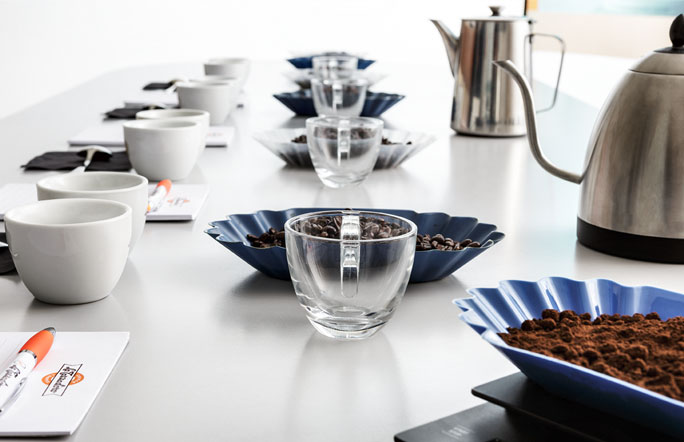
Harvesting
This is the complex and delicate stage that marks the beginning of the coffee bean’s trip to arrive to our coffee cup and give us that unmistakable scent.
Everything began in the cultivation Countries of origin, because quality mainly depends from raw materials. Just one defective grain can compromise a whole harvest for this lot, this is the reason why we like to be meticulous and inflexible in selection. The experts are carefully monitoring the coffee harvests in the various territories of the tropical strip.
The coffee plant fruit, drupe, initially is green in colour and after six ripening months assumes a red colour, for this reason also called cherry. Inside it there is the treasure, the seeds, that usually are two beans coloured in green.
How are they harvested? The more used harvesting methods in coffee cultivation are: picking and stripping.
- Picking is a manual procedure, that provides for harvesting by hand only the best and ripe fruits; with this system, the most costly, the plant is not damaged and excellent quality harvests are guaranteed.
- Stripping is an automatic harvest, only possible on flat land. In the rows are passing some tractors that will eradicate from the branches the cherries, both ripe and unripe and, only after the harvest, there will be the selection. This is a quicker way, although undoubtedly picking is better as far as the out come is concerned.

Working methods
The next transition is the separation of the beans from the fruit. This can happen in different ways according to the climate and the country: by drying, by steep water or by mixed systems.
The dry method (natural), consists of letting the fruits dry under the sun for a period of time between 10 and 15 days. When the cherries are dry, they will be decorticated freeing the seeds. This system produces a type of natural coffee with green beans.
The method of washed beans, longer and more complicated, is used for the fruits harvested through picking and consists of an immediate hulling after the harvest. The fruits will then be placed into water basins, where they will brew for hours or days. Later, the seeds are washed and prepared. During this process, the seeds get a green-azure colour.
The next step is the sieving or screening, when the beans are selected and classified based upon their size and shape. Usually, the bigger the beans the higher will be their price on the market.
During the sorting, that can be manual or electronic, the defective seeds are discarded, the product is weighed and pace in 60 kg. bags made of jute.
Now is ready to be transported to out company where qualified experts will carry out strict controls bag by bag. Here it will be processed and packed until becoming ground coffee or coffee beans that we have the pleasure to taste in any moment of the day.



